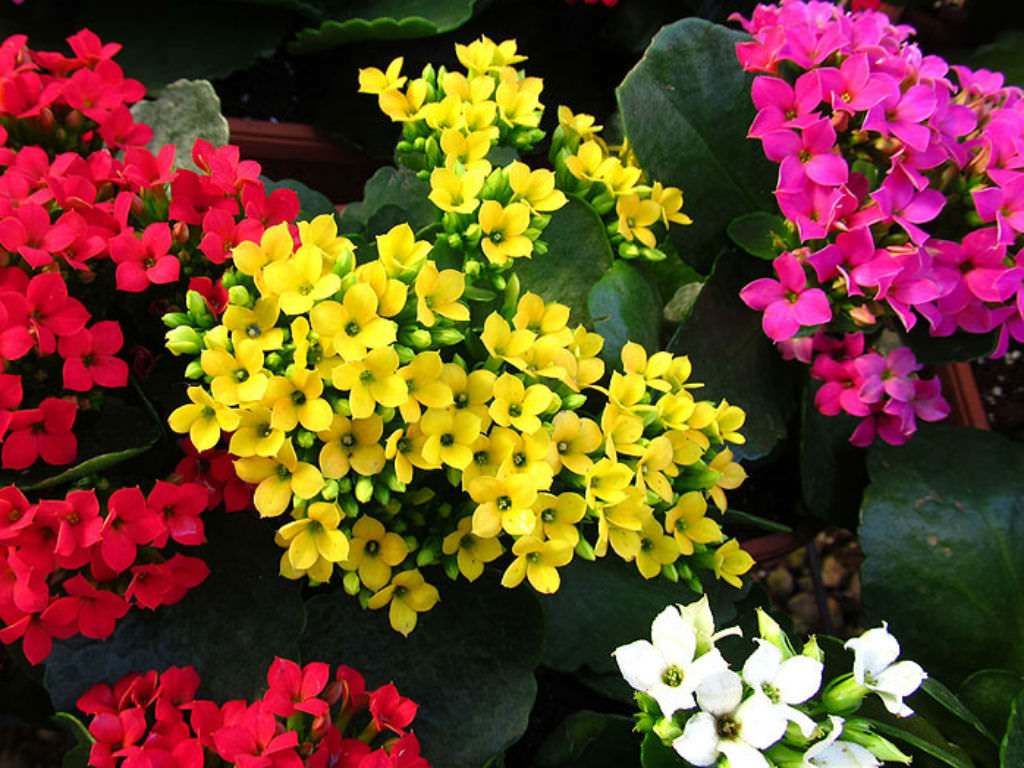The Kalanchoe plant, a beloved succulent known for its vibrant flowers and ease of care, is a fantastic addition to any household. Originally found from the Arabian Peninsula down to South Africa, this member of the Crassulaceae family has captured the hearts of many indoor gardeners across the globe. With its distinctive leaves and long-lasting blooms, it’s easy to see why the Kalanchoe has become a staple in plant collections, both for beginners and seasoned plant enthusiasts.
Understanding Kalanchoe: Growth and Characteristics
The Kalanchoe species range widely in size, from petite plants standing at just 6 cm to towering specimens reaching up to 2 meters in height. While Kalanchoe is a perennial, offering many years of beauty, it generally requires periodic rejuvenation to maintain its vigor and aesthetic appeal. A well-tended Kalanchoe can transform from a simple cutting into a flowering marvel in just one growing season, making it a rewarding plant for those looking into propagation.
Optimal Conditions for Thriving Kalanchoe
Temperature and Humidity
Kalanchoes thrive in temperatures that mirror their natural habitats. During summer, they are comfortable in room temperatures up to 80.6°F. In the colder months, however, they prefer it cooler, ideally no higher than 59°F. It’s important to shield them from the frosty air and excessive amounts of warmth, particularly in autumn and winter. An optimal environment prevents leaf deterioration and allows for the development of the plant’s eye-catching flower buds.
Lighting Needs
Light plays a crucial role in maintaining healthy Kalanchoe blooms. While these plants flourish under bright sunlight, care must be taken to avoid overexposure in summer, which can lead to scorched, red-tinted leaves. In winter, they prefer south or southeast-facing windows offering ample light. Interestingly, Kalanchoe benefits from controlled light exposure starting in August, where limiting light to no more than nine hours a day encourages more prolific blooming.
Soil Requirements
Kalanchoe plants prefer well-draining soil, ideal for succulents. Store-bought succulent mixes work well, but they can be enhanced with a small amount of sand for even better drainage. For those making their own mix, combine three parts coarse sand or perlite, two parts turf ground, two parts leafy earth, and two parts peat for optimal results. Ensuring that the soil isn’t overly dense will help the plant’s roots breathe and flourish.
Watering Practices
Proper watering is key to Kalanchoe care. In the summer, allow the top layer of soil to dry out before watering again, approximately every 5-10 days. During the colder months of November to February, water less frequently, about 1-2 times per month. Always use soft water and remember to drain excess water from the plant’s saucer to prevent root rot.
Fertilization
Fertilizing Kalanchoe should coincide with its growth phases. Use a cactus fertilizer during its growing period every 2-3 weeks. In the winter, if the plant is flowering, switch to a fertilizer meant for flowering plants but use only half the recommended dose to prevent over-fertilization, which can hinder blooming.
Propagation Tips
Kalanchoe is notably easy to propagate. The most straightforward method is via apical shoots about 8-10 cm long, ideally harvested in spring. After treating with heteroauxin, root the cuttings in peat or sand under polyethylene while ensuring regular ventilation at around 68-71.6°F. Maintain humidity with occasional misting, and once rooted, transplant them into individual pots under bright, filtered light. Prune after the third pair of leaves appear to encourage bushier growth.
Seeds are another option, though smaller in size, they should be sown in a sand and leafy soil mix in February, uncovered by soil. Keep the environment warm and germination should occur within two weeks. Kalanchoe’s unique trait of producing plantlets along its leaf margins offers yet another method of propagation, proving how versatile this plant truly is.
Common Challenges and Solutions
While generally hardy, Kalanchoe can face challenges such as spider mites, mealybugs, aphids, and fungal issues like powdery mildew. Proper watering techniques and lighting can mitigate these problems. If you notice yellowing lower leaves, it could be either the natural aging of the plant or inadequate moisture. Monitor the soil’s dampness to avoid such issues.
Another common issue is leggy growth, often due to insufficient light, or lack of bloom from excessive warmth or nutrients. By adjusting environmental conditions and ensuring a balanced fertilization regime, these problems can often be rectified without much hassle. In some cases, a transplant might be necessary, especially when new leaves appear small after flowering.
Overall, with the right care and attention, Kalanchoe can bloom beautifully, adding a splash of color to your home during its November to March flowering season. Its ease of care makes it an attractive choice for anyone looking to add a resilient and low-maintenance plant to their indoor garden collection.






